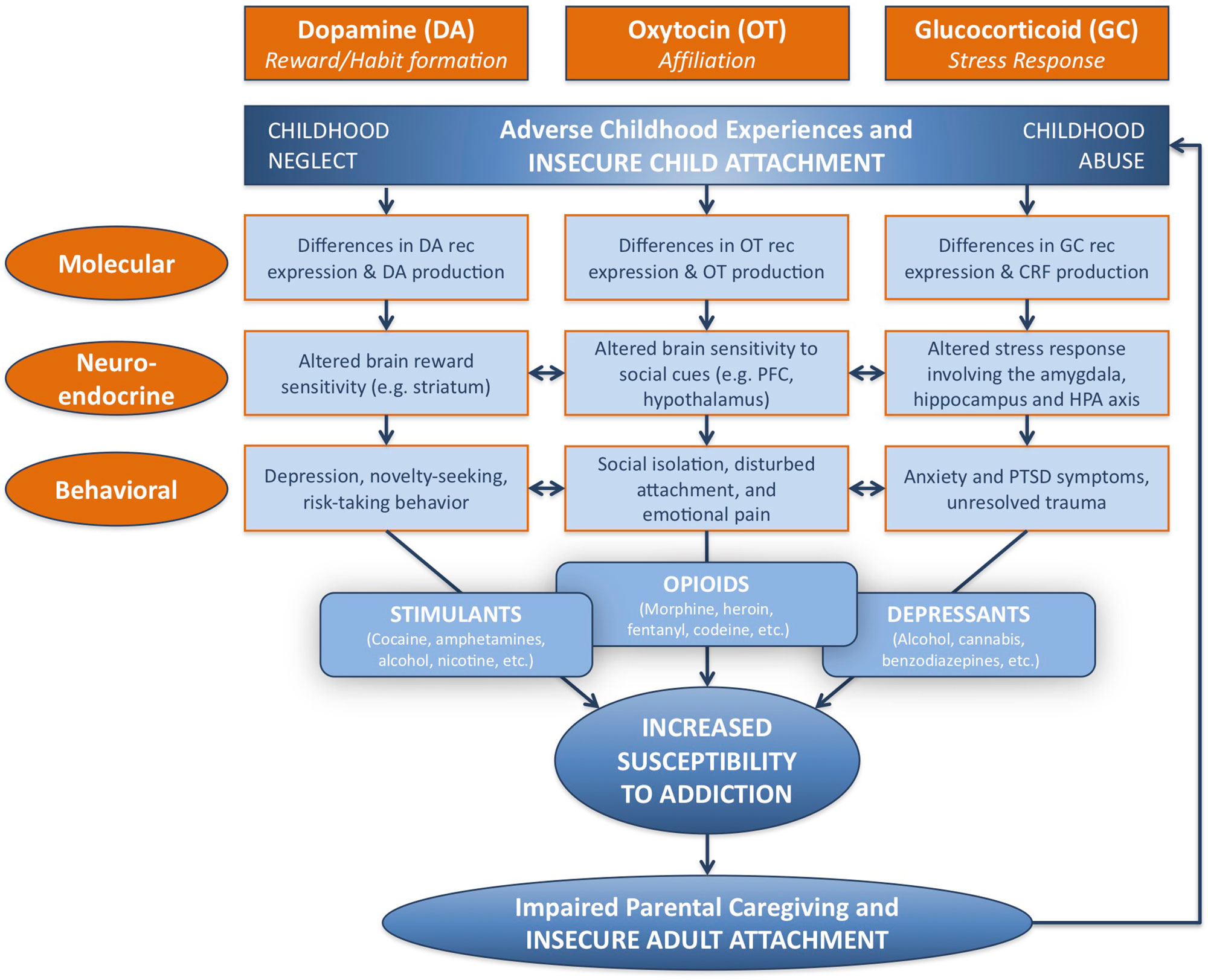The Neurocircuitry Cycle of Addiction:
Addiction as a Hijacking of the Brain:
The neurocircuitry of addiction involves a cycle between the reward system, the stress system, and the executive control system. Initially, addictive substances or behaviors hijack the brain’s reward pathway (primarily the dopamine-rich mesolimbic system), reinforcing use. Over time, the stress system becomes overactive and the prefrontal cortex weakens, reducing impulse control and making relapse more likely even in the absence of pleasure.

How is Adult Susceptibility Connected to Child Experience?
Adult Susceptibility develops over a lifetime:
- Adult susceptibility to addiction, trauma responses, or behavioral dysregulation is deeply connected to childhood experiences through the brain’s development. Early adversity or neglect can disrupt the formation of neural pathways related to stress regulation, reward processing, and attachment, particularly in the amygdala, prefrontal cortex, and dopamine systems. As a result, the brain may adapt in ways that increase vulnerability to compulsive behaviors or emotional instability in adulthood.
- Understanding the neurobiological dynamics of trauma is essential for effectively addressing addiction in adults. Without acknowledging how trauma reshapes the brain—altering neurotransmitter activity, neural connectivity, and stress regulation—interventions risk treating only the symptoms, not the root causes.

During young adulthood, a developmental window where identity, intimacy, and independence combine is forming. Timely support can interrupt the cycle of trauma and addiction before it becomes deeply entrenched.
- Addiction is not simply a failure of willpower; it is often a neurodevelopmental response to chronic emotional pain and disrupted attachment. By applying a trauma-informed lens, clinicians and social workers can better recognize the adaptive function that substance use has served in a person’s life and begin to offer safer, more compassionate paths toward healing.
Stages of the Addiction Cycle:

Explanation of Above:
- During intoxication, drug-induced activation of the brain’s reward regions (in blue) is enhanced by conditioned cues in areas of increased sensitization (in green).
- During withdrawal, the activation of brain regions involved in emotions (in pink) results in negative mood and enhanced sensitivity to stress.
- During preoccupation, the decreased function of the prefrontal cortex leads to an inability to balance the strong desire for the drug with the will to abstain, which triggers relapse and reinitiates the cycle of addiction.
- The compromised neurocircuitry reflects the disruption of the dopamine and glutamate systems and the stress-control systems of the brain, which are affected by corticotropin-releasing factor and dynorphin. The behaviors during the three stages of addiction change as a person transitions from drug experimentation to addiction as a function of the progressive neuroadaptations that occur in the brain.


